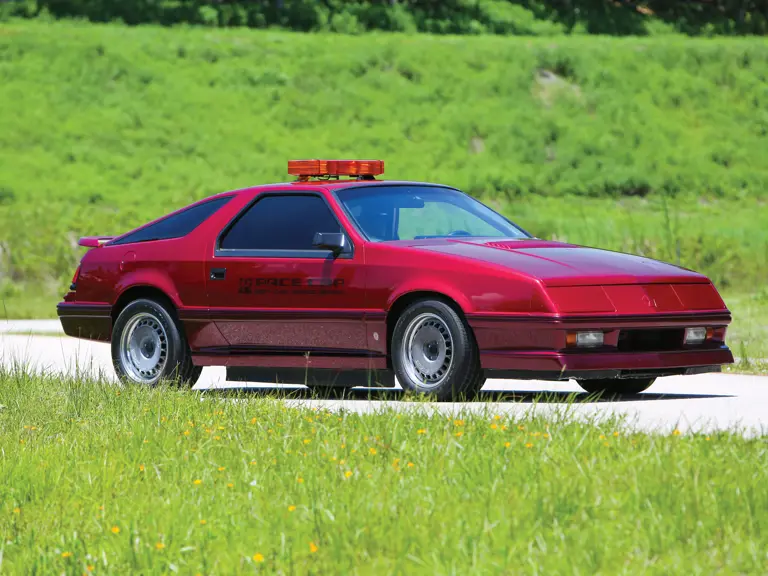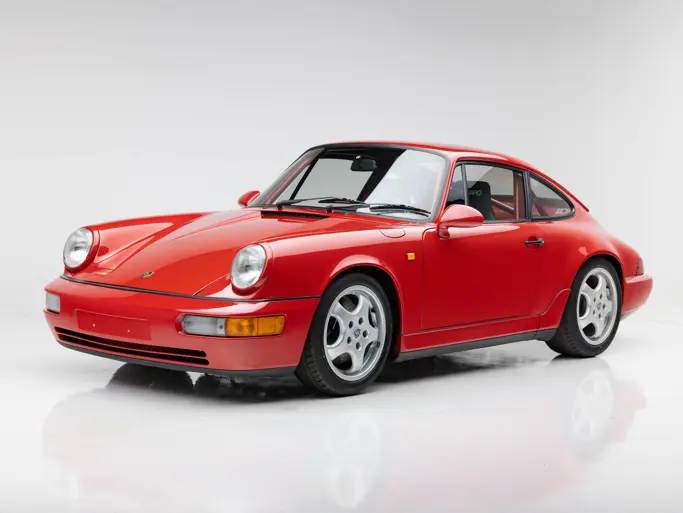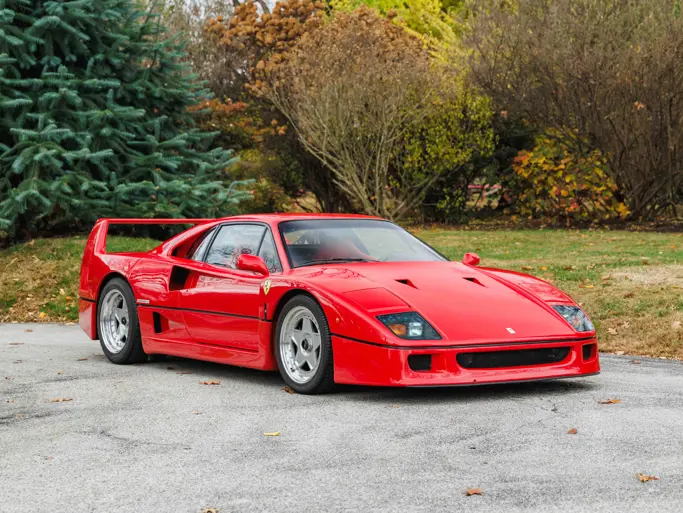
1984 Dodge CART/PPG Indy Car Series
{{lr.item.text}}
$7,040 USD | Sold
{{bidding.lot.reserveStatusFormatted}}
- Specially built 2.2-liter inline four-cylinder turbo engine
- Manual transmission
- Special build via PPG Industries to showcase Indy Car series
- One of official select number of PPG pace cars
- Special interior with race-type seats & belts
- Tower to track communication equipment
- Safety lights
- Ronal alloy wheels
- Special VDO instruments & racing steering wheel
- Originally driven by host of top women racers
- Travelled country in concert with Indy Car series as official pace car
- One of one
Before “The Split” between the newly-formed Indy Racing League (IRL) and the established Championship Auto Racing Teams (CART) in 1996; Indy Car racing was the top of the racing world in the United States and was a point of concern for even the denizens of the world of Formula One. With drivers such as A.J. Foyt, Al Unser, Al Unser, Jr., Mario and Michael Andretti, Rick Mears, Bobby Rahal, Emerson Fittipaldi, Gordon Johncock, Johnny Rutherford and Danny Sullivan (to name a few) at the forefront of the American race fans focus, PPG Industries decided to showcase their business in the form of one-off pace cars in association with American manufacturers.
Money was freely spent and the entire Indy Car series was sponsored by PPG Industries during this period. All of the cars were painted in unique finishes provided by PPG’s Automotive Finishes Group to withstand the punishment of wheel-to-wheel competition on grueling road courses and high speed oval tracks, just as the machines they paced to the green flag. This writer worked as a CART official over a 13-year period that included the 1984 season, and can attest to the high-quality presentation and presence of this particular Dodge, and all of its fellow PPG Pace Cars during the series’ heyday.
When not on track starting a race; the PPG Pace Cars were driven by an assortment of accomplished female racecar drivers during the course of the race weekend. They were often seen all-together on the track as these skilled drivers performed tight and structured maneuvers at speed or were lined up to give fans and VIPs a thrill ride with the opportunity to see the racetrack from the cockpit. When not on track, the PPG Pace Cars were handsomely displayed in a prominent location next to the gleaming custom 18-wheelers that transported them nationwide as the season unfolded. The PPG Pace Cars became nearly synonymous to the Indy Cars; you could count on them being on-site in force.
The PPG Pace Car Team featured well-known women racecar drivers who were all competitors in other forms of motorsports. This team of formidable drivers wheeled the one-of-a-kind, high-tech, high performance machines around the track at all races on the CART circuit. Members of this team included Robin McCall-Dallenbach, Jodi Dangel, Kathy Rude-Hemrath, Tricia Hessinger, Patty Moise, Alice Ridpath, Margie Smith-Haas, Lyn St. James, Desiré Wilson and Jane Smith. This car is accompanied by one of Jane Smith’s uniforms along with numerous pieces of memorabilia from the era and its time in the spotlight.
This fleet of cars was the subject of a feature article in Automobile Quarterly titled ‘Radical Sleek,’ such was the positive crowd response to the lineup and wanting to know more about them. The Dodge runs with a 2.2-liter four-cylinder with numerous modifications and is mated to a five-speed manual transmission. While the cars were upgraded in many respects, they also had amenities like three-tone leather, air conditioning, power steering and power brakes. Race-bred equipment includes a fuel cell, Aeroquip-type fittings and plumbing, shock tower brace, Ronal magnesium wheels, Goodyear Eagle VR50 tires, three-inch competition-style safety belts, console, CB radio and Panasonic radio controls. As with all of the PPG Pace Cars, there is an overhead amber strobe light and critical (for officials at the race track) communications equipment that allowed the pace car driver to be in touch with race control for picking up the proper driver in a yellow flag situation and to know the correct lap for starts and restarts.
CART/PPG Pace Cars were small in total number produced, with each car being a total one-off build. In period, this writer spoke during a race weekend with the then-Chairman of PPG Industries, Fred Rhue, about the final destination of these vehicles when they were retired. He conveyed that, as with many one-off vehicles from manufacturers, they would likely be destroyed. Whether this actually occurred with other examples is unknown, but this Dodge has survived and is a wonderful illustration of the genre.


 | Auburn, Indiana
| Auburn, Indiana


